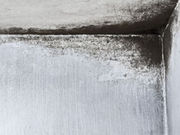Exposure during infancy linked to increased risk to age 16 years, especially for nonallergic disease
WEDNESDAY, Dec. 14, 2016 (HealthDay News) — Exposure to mold and dampness during infancy is associated with increased risk of asthma and rhinitis up to age 16 years, according to a study published online Dec. 7 in Allergy.
Jesse D. Thatcher, M.P.H., from the Karolinska Institutet in Stockholm, and colleagues obtained questionnaire-derived reports of mold or dampness indicators and allergic outcomes of 3,798 children in a Swedish birth cohort. They assessed sensitization from blood samples in 3,293 children. Generalized estimating equations were used to examine longitudinal associations between prevalent asthma, rhinitis, and immunoglobulin E (IgE) sensitization and mold or dampness indicators.
The researchers found that there was a correlation for exposure to any mold or dampness indicator with asthma up to age 16 years (odds ratio, 1.31); exposure to mold odor and visible mold correlated with rhinitis (odds ratios, 1.29 and 1.28, respectively). For nonallergic asthma and rhinitis, increased risks were observed (odds ratios, 1.8 and 1.41, respectively). There was no correlation between mold and dampness indicators and IgE sensitization. There was a correlation for exposure to any mold or dampness indicator with persistent asthma (odds ratio, 1.73); no correlations were seen for early-transient or late-onset asthma.
“Exposure to mold or dampness during infancy increased the risk of asthma and rhinitis to age 16 years, particularly for nonallergic disease,” the authors write. “Early exposure to mold or dampness appeared particularly associated with persistent asthma through adolescence.”
Thermo Fisher Scientific provided the reagents for the IgE analyses.
Full Text (subscription or payment may be required)
Copyright © 2016 HealthDay. All rights reserved.








